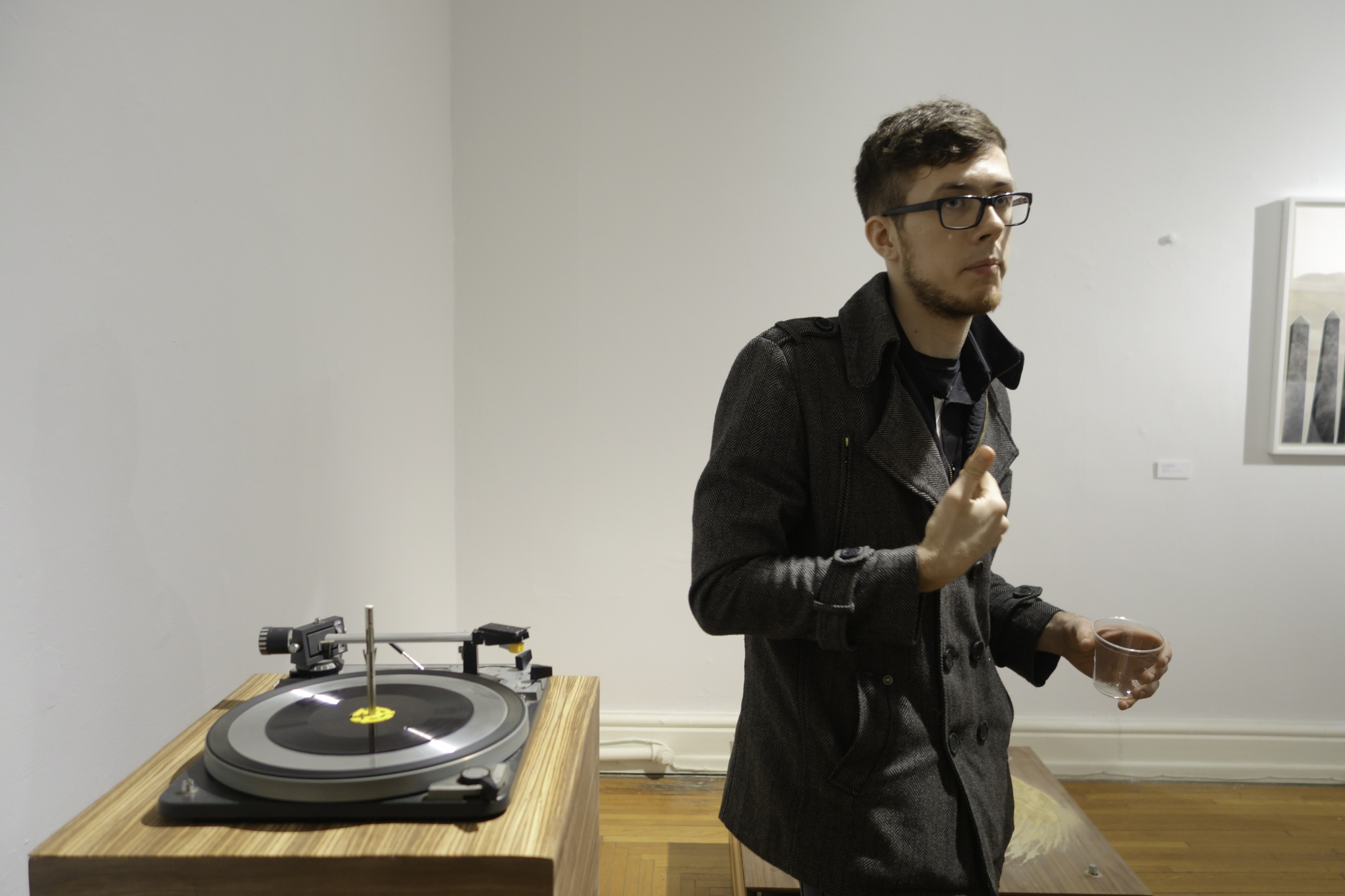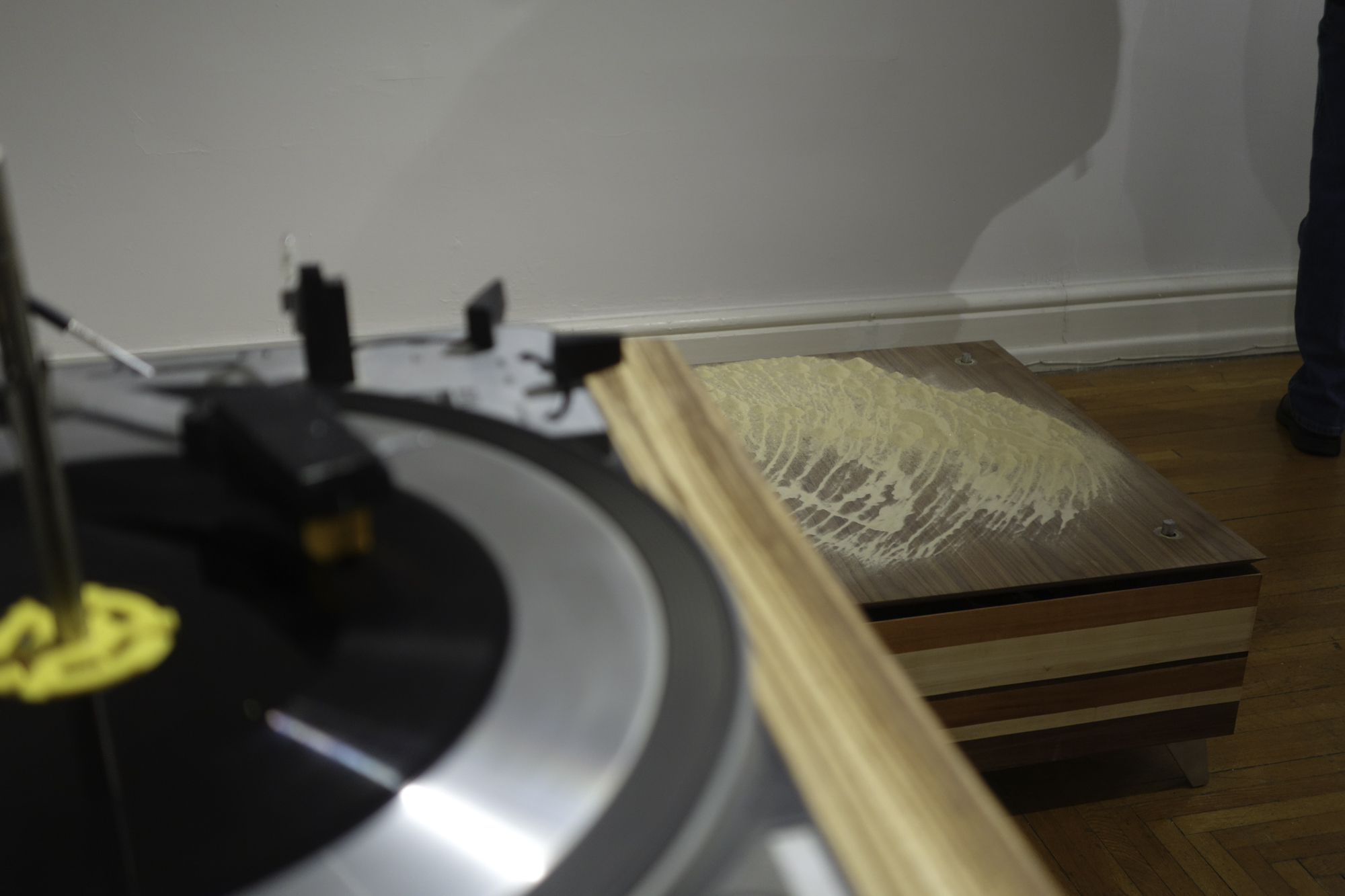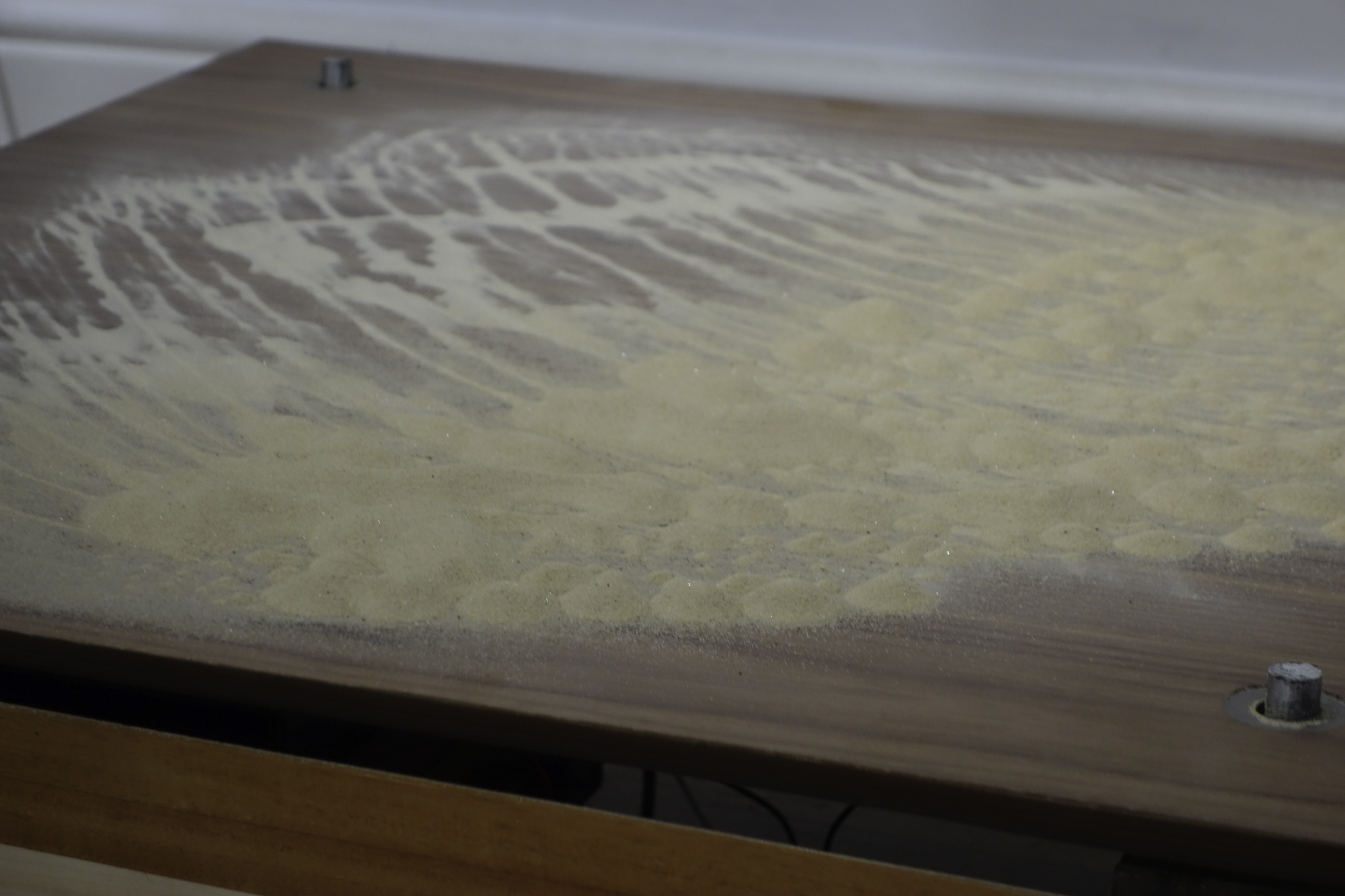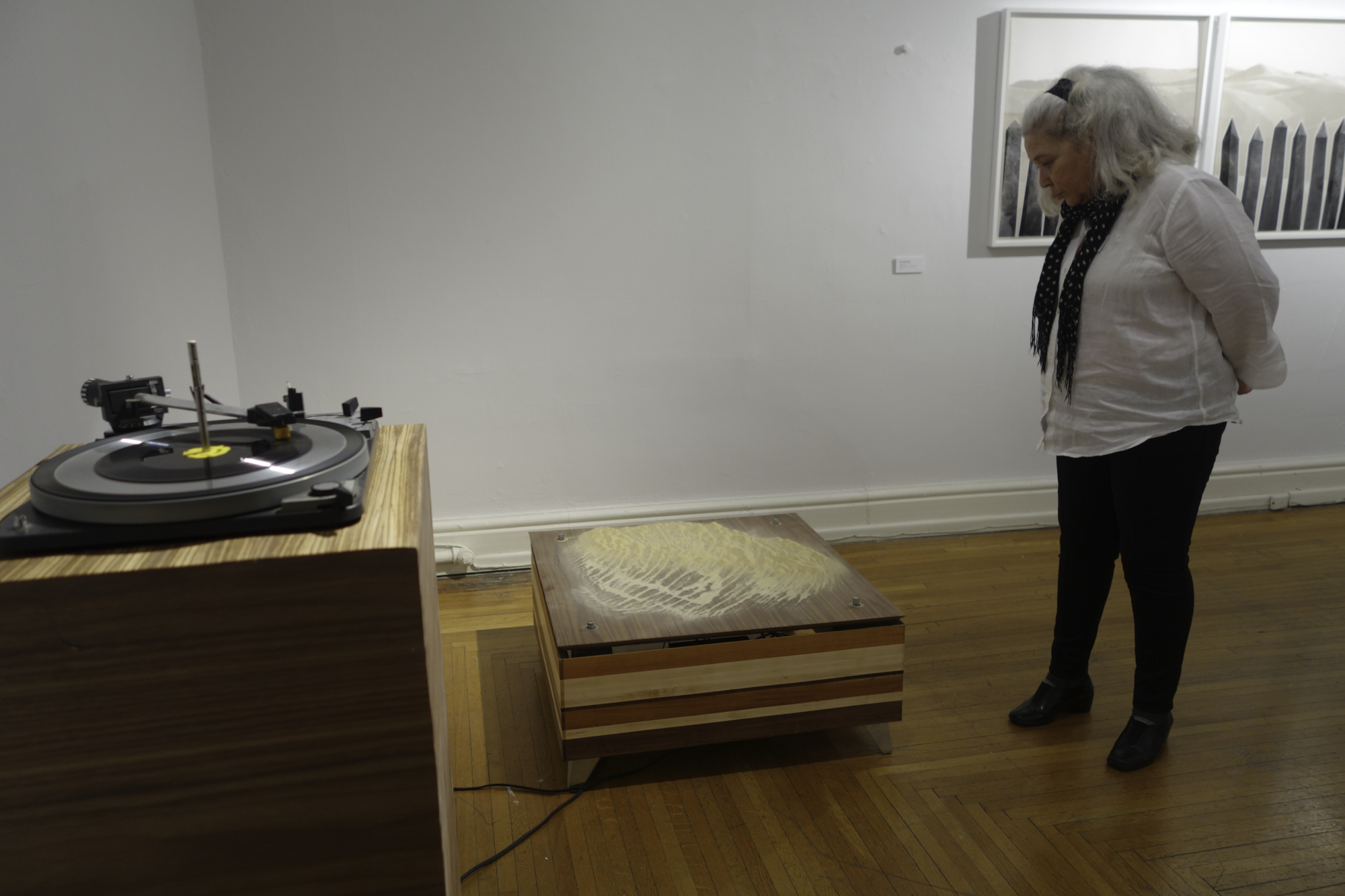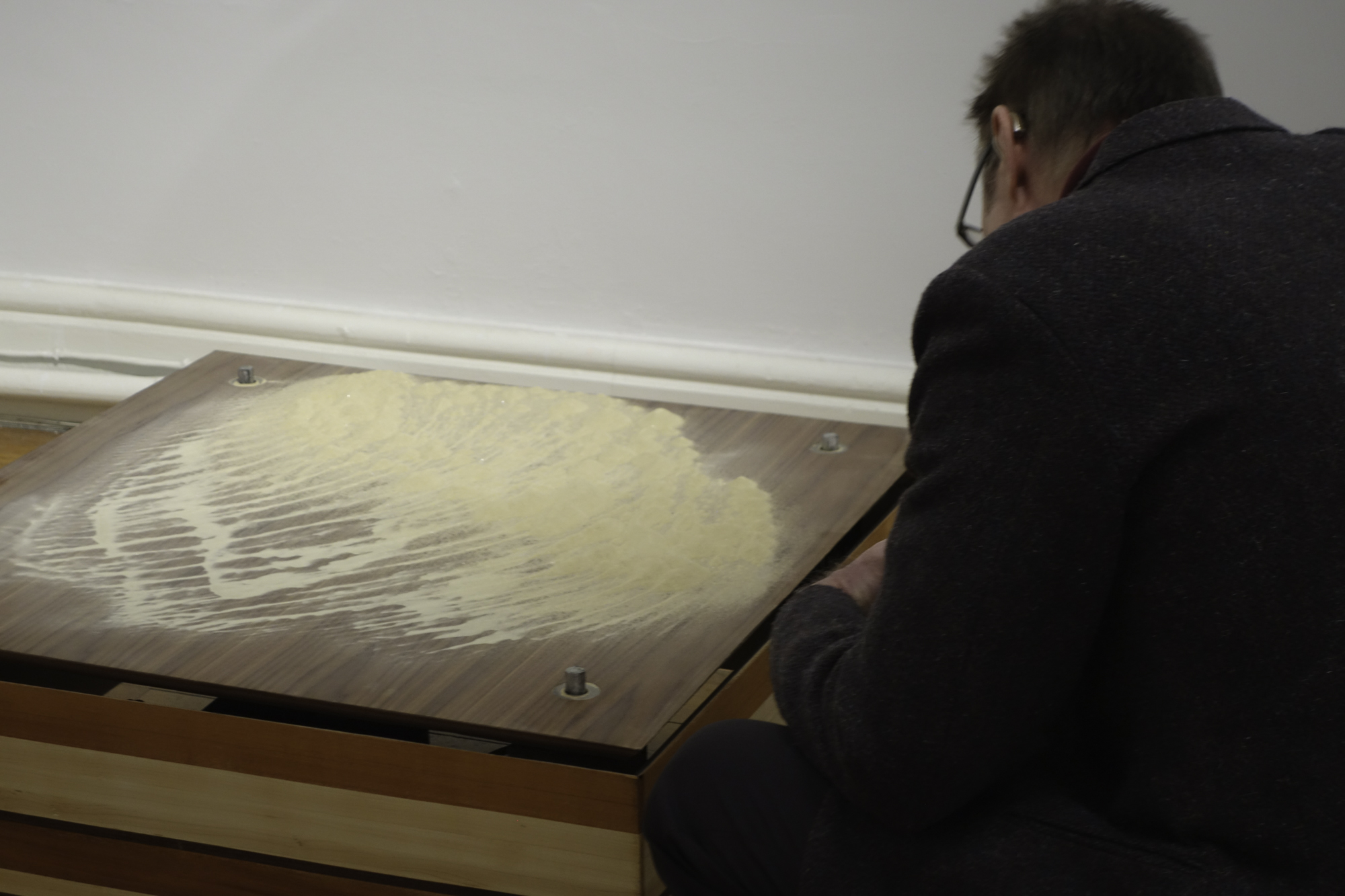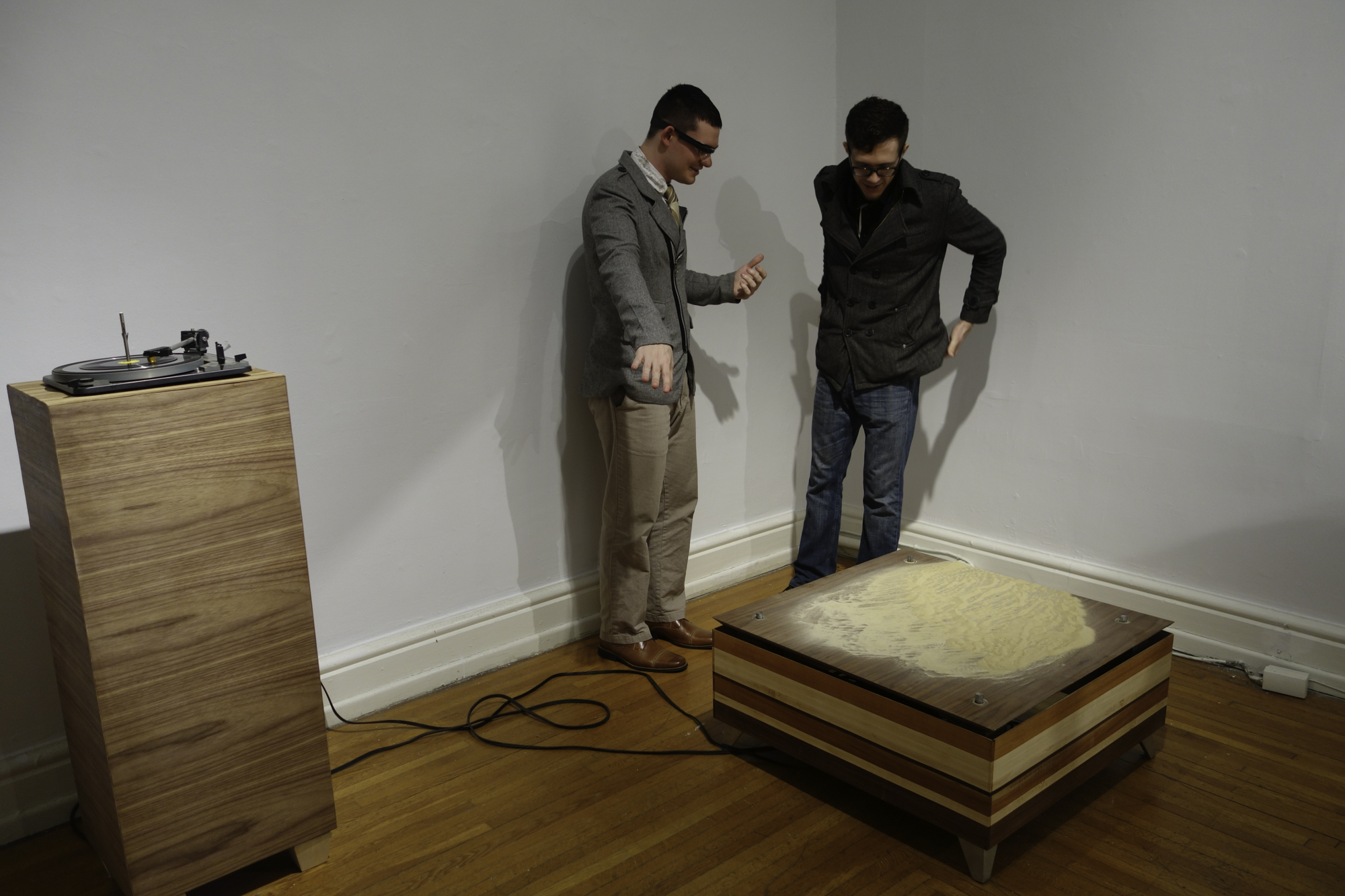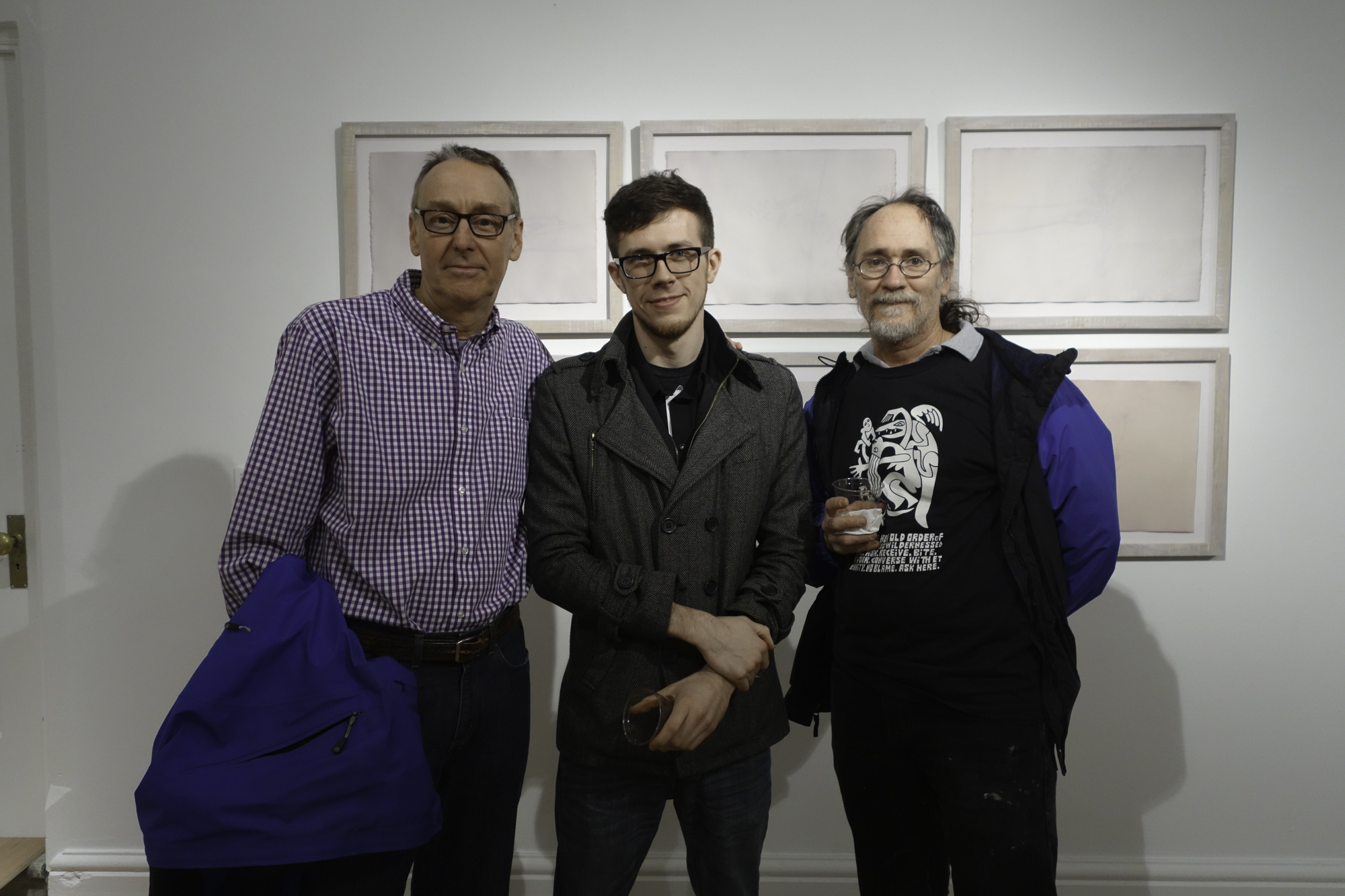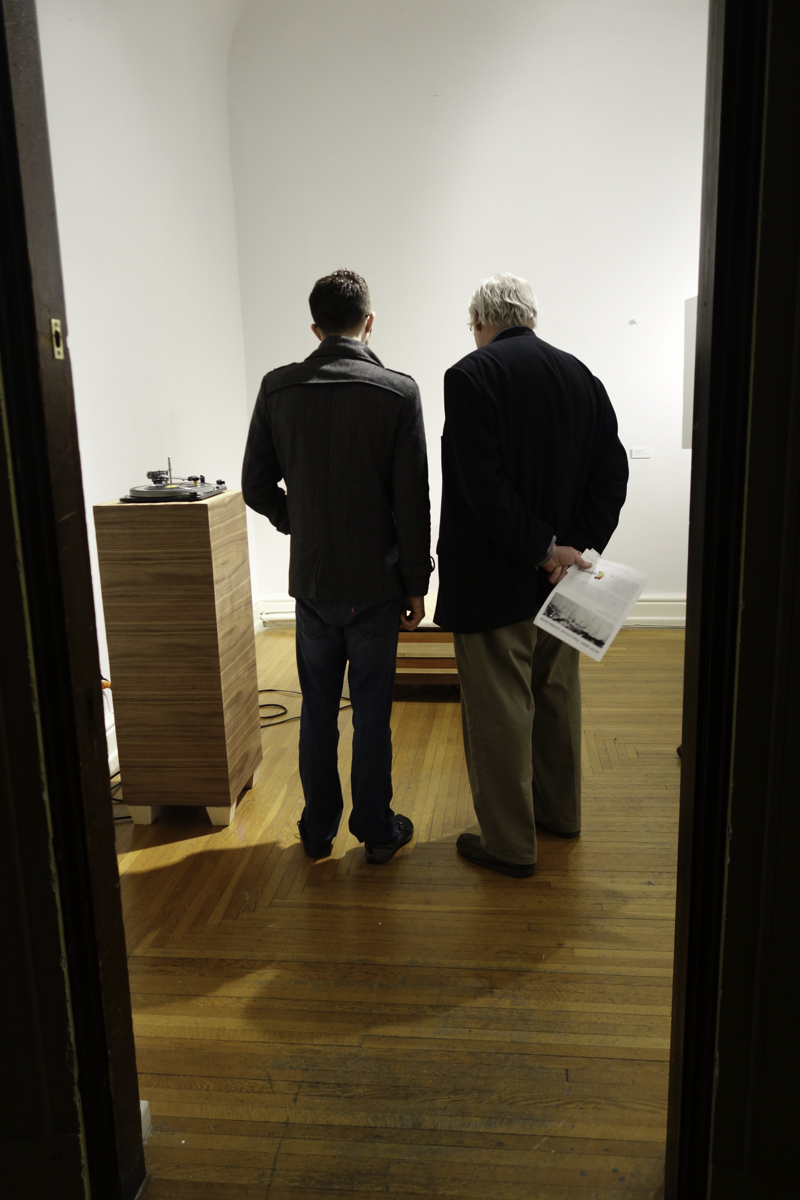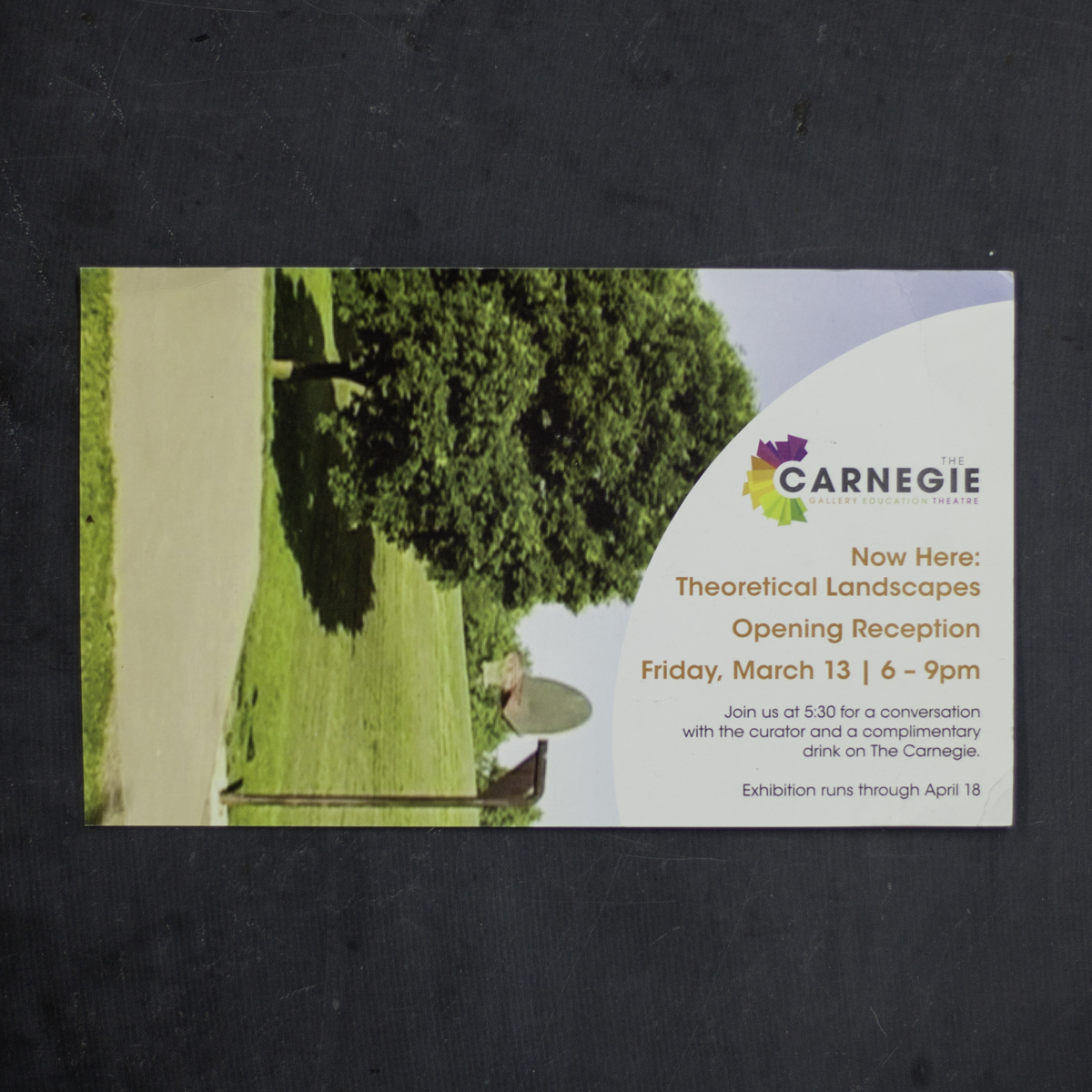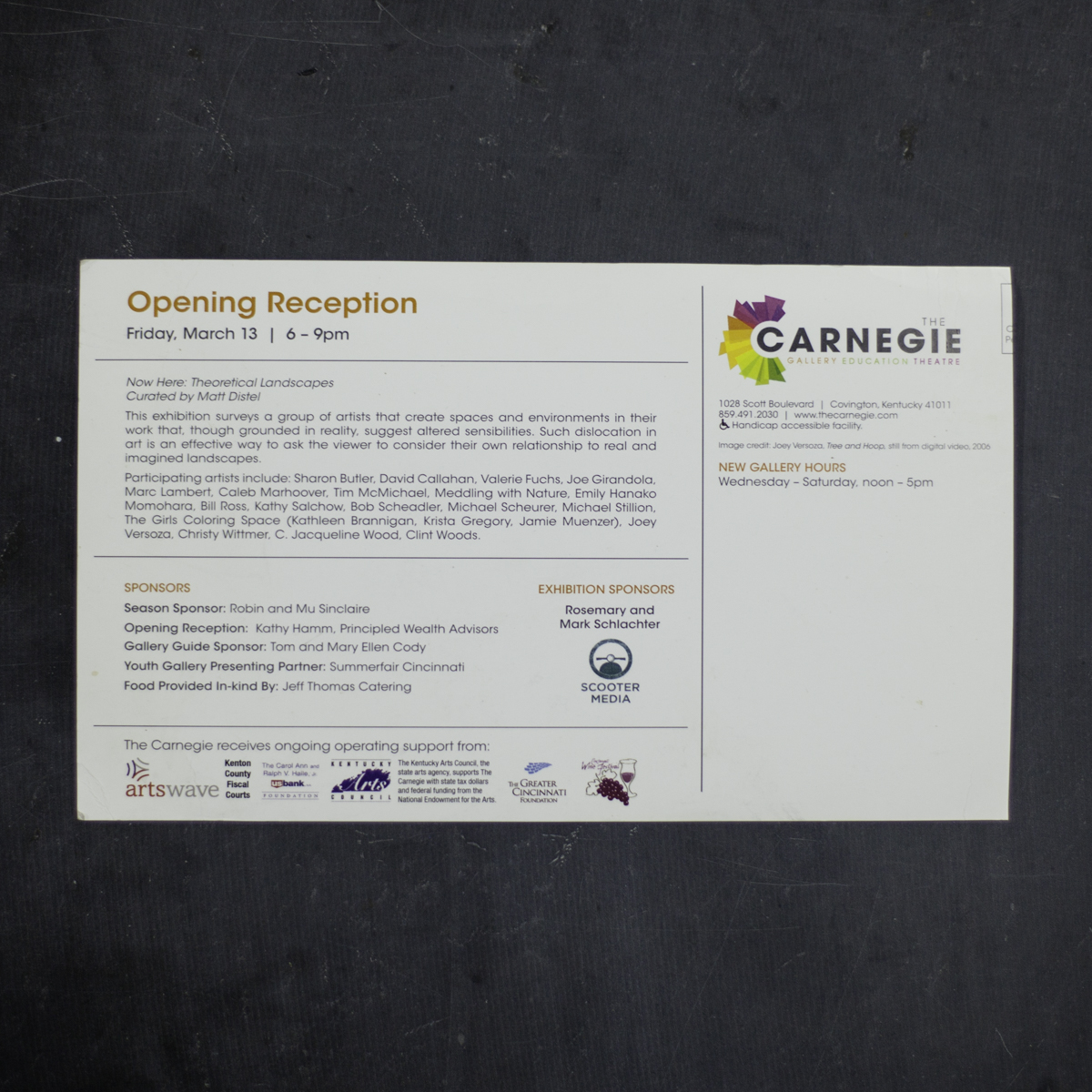Now Here: Theoretical Landscapes
What is a landscape? What exactly constitutes its borders and ambiguities? “Now Here: Theoretical Landscapes,” a new exhibit at The Carnegie in Covington, explores this complicated question, displaying a cornucopia of artworks by twenty-one regional artists who, through varied media, attempt to redefine the landscape genre. It becomes immediately evident upon entering the gallery that any traditional definition of landscape has been abandoned; no pastoral panoramas of greenery or horizons dividing sea and sky appear anywhere in “Theoretical Landscapes.” Instead, we are left with a playful catalogue of re-envisioned landscapes: personal landscapes, acoustic landscapes, tactile landscapes. Anything that can be conceptualized spatially, temporally and mnemonically can be reimagined as a landscape that unfolds within the gallery, expertly curated by Matt Distel. That the proposed landscapes are so outlandish creates a cohesive tension throughout the exhibit between the real and imaginary, the past and the present. This frictional dichotomy allows for the artworks to engage not in an argument, but a dialogue with each other about what a theoretical landscape really is. The artists in “Now Here: Theoretical Landscapes” take another look at the criteria by which we measure landscapes, remapping the genre’s parameters as most know them to include nearly anything that can be shaped not only in physical space, but in memory and sound. So, what is a landscape? After viewing this exhibit, it becomes apparent that no simple or satisfying answer to this question exists. But this, ultimately, is what makes “Now Here: Theoretical Landscapes” such a fulfilling, ambiguous experience, one that will linger in the mind long after visiting. Zack Hatfield, “In Theory: Navigating reimagined territories in Now Here: Theoretical Landscapes at The Carnegie”, AEQAI*Exhibition photography by Robert Joseph. WORK FEATURED

Petrosyllabic Resonator II
As our instants
inevitably evaporate, their coordinates wander away
from the realm of tangible things, and instead may only
be plotted within the domain of metamorphic memory.
Petrosyllabic Resonator corrects for these distortions by using the spoken remnant of places remembered as a catalyst for the formation of new landscapes.
Petrosyllabic Resonator corrects for these distortions by using the spoken remnant of places remembered as a catalyst for the formation of new landscapes.

Specimens
A series of Anthotype plant dye prints which build upon the empiricist principles of the New Objectivity. Specimens attempts to delimit the boundaries of identity in terms of the concrete artifacts of place.
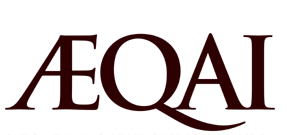
In Theory: Navigating reimagined territories in Now Here: Theoretical Landscapes at The Carnegie
What is a landscape? What exactly constitutes its borders and ambiguities? “Now Here: Theoretical Landscapes,” a new exhibit at The Carnegie in Covington, explores this complicated question, displaying a cornucopia of artworks by twenty-one regional artists who, through varied media, attempt to redefine the landscape genre.
Regional Artists Explore the Boundaries of Landscapes in ‘Now Here’
Matt Distel’s smartly curated exhibition, Now Here: Theoretical Landscapes, is a broad sampling of more than 20 regional artists who mine personal and universal landscapes to present hypothetical meditations on locations of space and time.

Artists Explore New Approach to Landscapes at Carnegie Exhibit
If you’re like us, you’re asking “What’s a theoretical landscape?” We knew Carnegie gallery director Matt Distel would have the answer.
“Now Here,” Distel explains, “uses the landscape as a springboard into a multitude of concepts, environments and objects. It asks what creates a landscape and what does a landscape contain. So really this is what I wanted to do. Ask the big question of, how are artists in this region creating work that utilizes landscape in new and inventive ways?”
“Now Here,” Distel explains, “uses the landscape as a springboard into a multitude of concepts, environments and objects. It asks what creates a landscape and what does a landscape contain. So really this is what I wanted to do. Ask the big question of, how are artists in this region creating work that utilizes landscape in new and inventive ways?”

